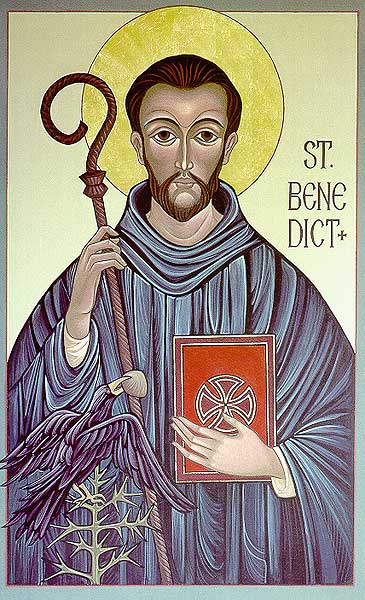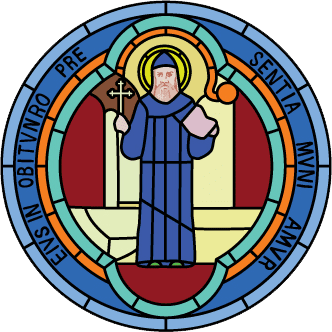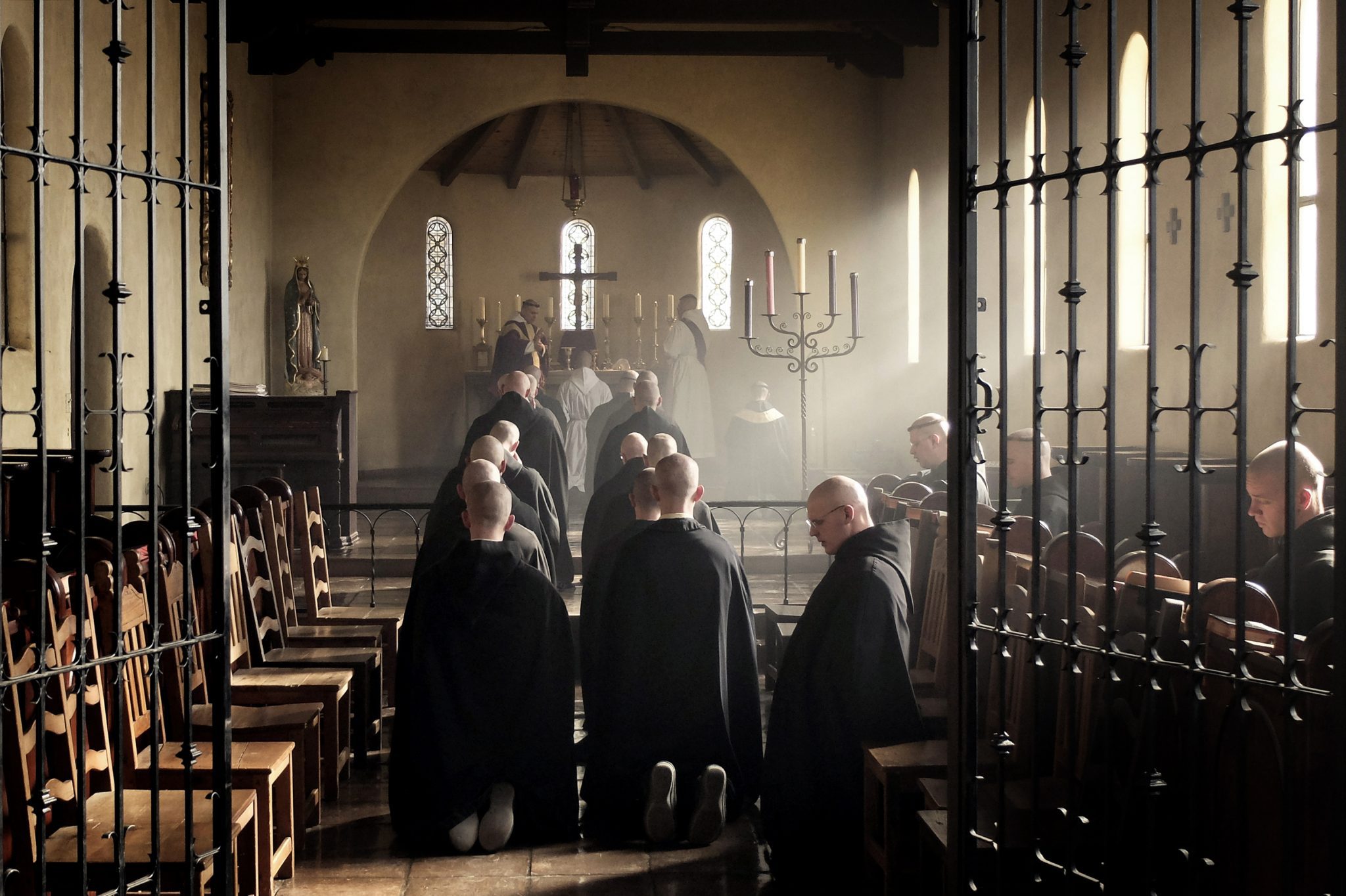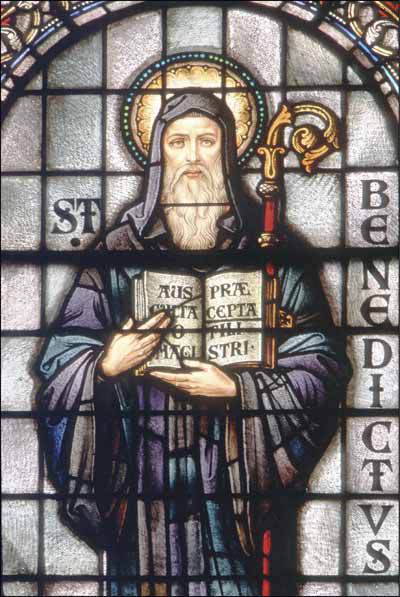 St. Benedict the Abbot was the founder of Western monasticism, the author of the famous Benedictine Order, and the patron saint of Europe. His attributes include: a bell, cup and serpent representing poison, broken utensil, crosier, and raven.
St. Benedict the Abbot was the founder of Western monasticism, the author of the famous Benedictine Order, and the patron saint of Europe. His attributes include: a bell, cup and serpent representing poison, broken utensil, crosier, and raven.
Story of St. Benedict
St. Benedict, twin brother of Scholastica, was born in Nursia in central Italy. When he got older he left for studies in Rome but was so distressed by the immorality of society that he ended up in Subiaco where he became a hermit. His faith never faltered and he soon gain followers who were in awe of his spiritual knowledge. He organized them into twelve monasteries; there he performed many miracles. He found water on a desolate mountaintop to quench the thirst of his monks, retrieved a bill hook’s iron from the bottom of a lake and rejoined its handle, prevented a monk from leading a dissolute life through intervention, and made another monk walk on water to save a young man from drowning.
Although his followers loved him, others grew envious of him, a jealous cleric an attempt to poison him, which is now symbolized by a snake coming out of his chalice. He is also often depicted with a raven that is said to have carried away a loaf of poisoned bread that a jealous enemy had sent to him. With this final poison attempt, Benedict left and took a small group of monks to Monte Cassino where he wrote the final version of his Rule. In it he emphasized authority and obedience, stability and community life. His monks’ primary occupation was the praying of the Divine Office in common, reading of sacred texts and manual work of various kinds.
Benedict remained in Monte Cassino the rest of his life. He never became a priest and never intended to found a new religious order yet he influenced the growth of both Western monasticism and Western civilization.
He died on March 21, 550 and was buried alongside his sister whom he would meet once a year outside his monastery for the exchange of spiritual insights. His feast day was established as July 11, the day his remains were transferred to another site within the monastery. His Rule was followed in France, England, and Germany, and when Charlemagne initiated a reform of monasticism in 814, he chose the Rule of St. Benedict to be imposed upon all monasteries within the empire.


